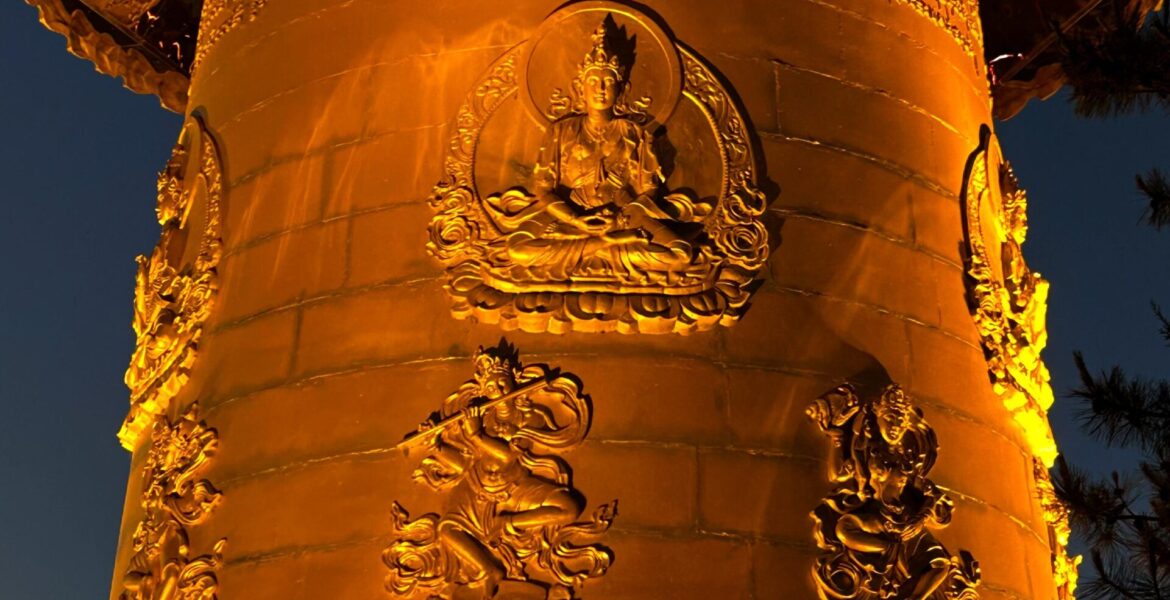If you’re planning to visit China and you’re looking for a trip full of breathtaking nature, ancient towns, and authentic cultural experiences, Yunnan is the perfect destination. This province is one of the most diverse regions in China, both in terms of nature and culture. From Tibetan monasteries to hidden mountain villages, every corner of Yunnan feels like stepping into a completely different world.
Based on my own experience, I’ve put together this 10-day itinerary to help you discover the best of Yunnan, not just the famous tourist spots, but also the hidden gems that made this trip unforgettable for me.
Day 1-3: Shangri-La – Tibetan Culture at High Altitude 香格里拉
How to get there: Fly directly to Diqing Shangri-La Airport from major cities like Kunming or Chengdu or anywhere else in China.
Start your Yunnan journey in Shangri-La, the gateway to the Tibetan world. This small town sits at over 3,000 meters above sea level, so take the first day to rest and adapt to the altitude — drink hot tea, walk slowly, and avoid alcohol.
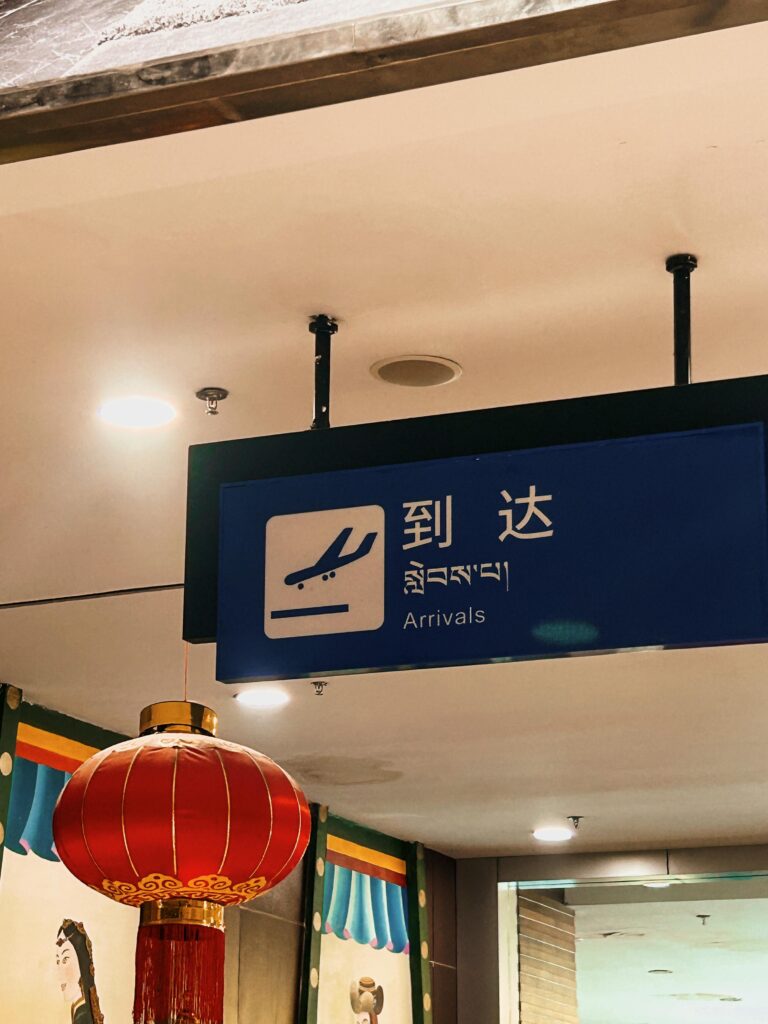
What to Do:
- Explore the charming Dukezong Ancient Town (独克宗古城) and spin the giant prayer wheel with locals.
- Visit the Songzanlin Monastery 噶丹松赞林寺: also known as the Little Potala Palace, it is the largest Tibetan monastery in Yunnan.
- Take a day trip to Napahai Lake 纳帕海: rent a scooter from the old town and explore the Napa Valley, it is especially beautiful in the spring when the grasslands turn green.
- Visit the Pudacuo National Park (普达措国家公园): a beautiful park with lakes, grasslands, and yaks. Visit Shudu Lake (属都湖) for amazing views.
- Try a Traditional Tibetan Banquet experience: taste local Tibetan hotpot with a performance.
- Wear Traditional Clothes: everywhere in the old town, you’ll find local shops where you can rent traditional clothes and even get your make-up done! It’s a unique experience for less that 100 CNY!


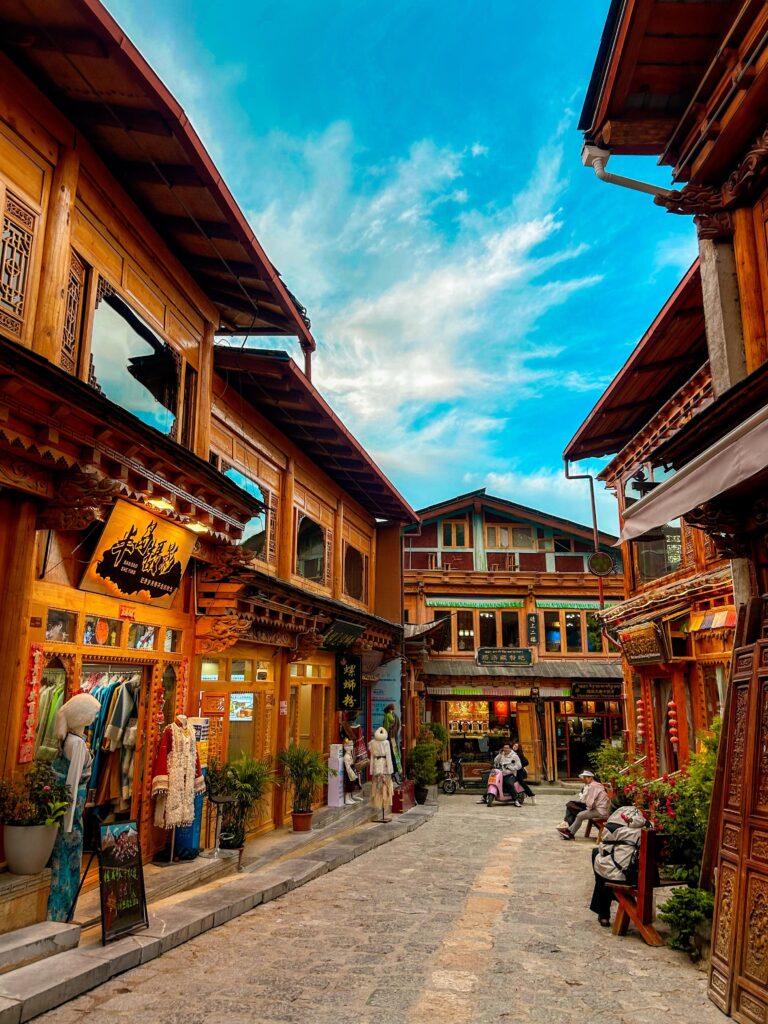
Tips:
- Try local Tibetan specialties like yak butter tea and tsampa (roasted barley flour).
- Book Experiences on the DianPing APP (大众点评).
- Shangri-La is at a high altitude, so to adapt naturally, take it slow on the first day, stay hydrated, drink Tibetan butter tea, eat light high-carb meals, and try Hong Jing Tian (红景天), but if needed, you can buy oxygen canisters at pharmacies, tourist shops, hotels, and the airport.
- When visiting Shangri-La, it is important to respect Tibetan culture by dressing modestly, walking clockwise in temples, avoiding photos without permission, stepping over thresholds (not on them), and finally speaking softly in monasteries.
Accommodation Recommendation:
In Shangri-La I stayed at Yi’s Hostel. Beyond its cozy atmosphere and perfect location, what made this place truly special was the host. Our conversations were enriching, offering me deep insights into the local culture in a way no guidebook ever could.
If you visit, don’t miss the chance to try the food at the hostel! The warm fruit tea is the perfect comfort drink, and the fried noodles are simply delicious.

Day 4-7: Lijiang – Shangnan Yaoxi Village – Baisha Village – Jade Water Village
From Shangri-La, take train ride to Lijiang– 丽江, one of the most famous towns in Yunnan. But what made this part of my journey truly unique was exlporing the nearby mountain villages.
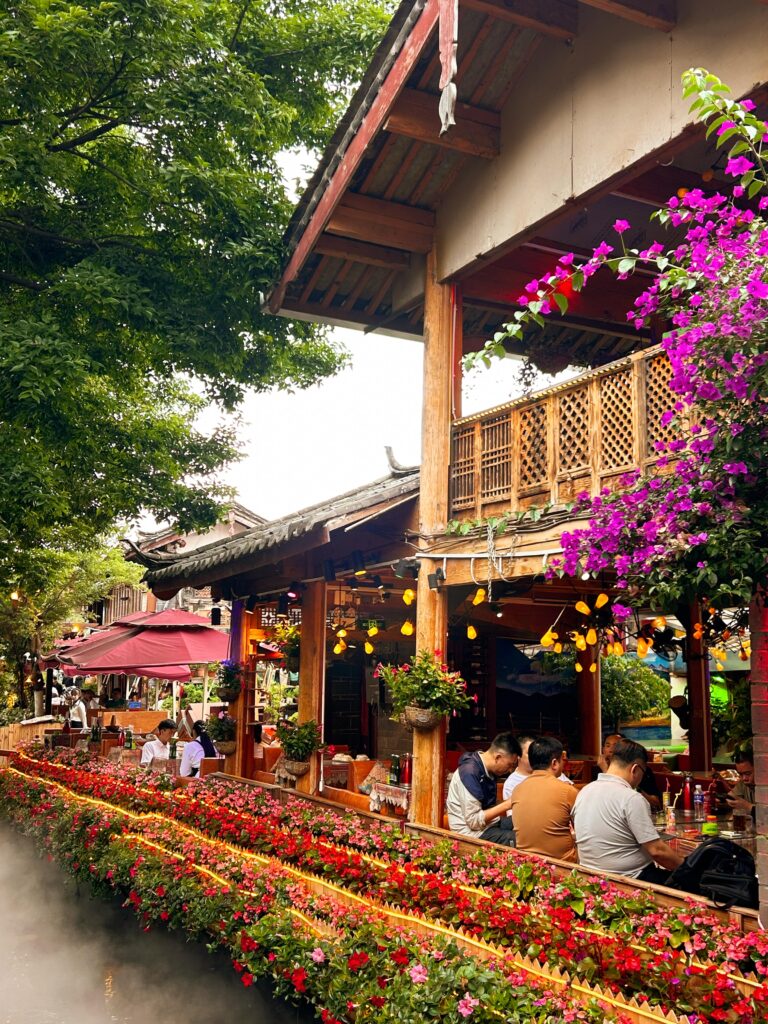
What to Do:
- Walk through the streets of Lijiang Old Town (丽江古城) and immerse yourself in its beauty.
- Visit Mu’s Residence (木府): a historical mansion showcasing Naxi culture and architecture.
- Visit Black Dragon Pool (黑龙潭公园), a beautiful scenic park with reflections of the Jade Dragon Snow Mountain.
- Try Naxi Cuisine: don’t miss specialties like Lijiang Baba (丽江粑粑) and Yak hotpot.
- Day Trip to Baisha Village – 白沙: this is one of the oldest town in Lijiang City. It is a small, peaceful village with stunning views of Jade Dragon Snow Mountain. It is the birthplace of Naxi culture and a serene place where life moves slowly.
- Visit Jade Water Village – 玉水寨: Just 15 km away from Lijiang Old Town, this Village is a hidden gem at the foot of the Yulong Snow Mountain. The Village is rooted in the traditions and spirituality of the Naxi people, so here you can learn more about this ethnic minority group.
- Spend a couple of nights in a remote mountain village like Shangnan Yaoxi Village – 上南尧西村, to experience the true countryside life.
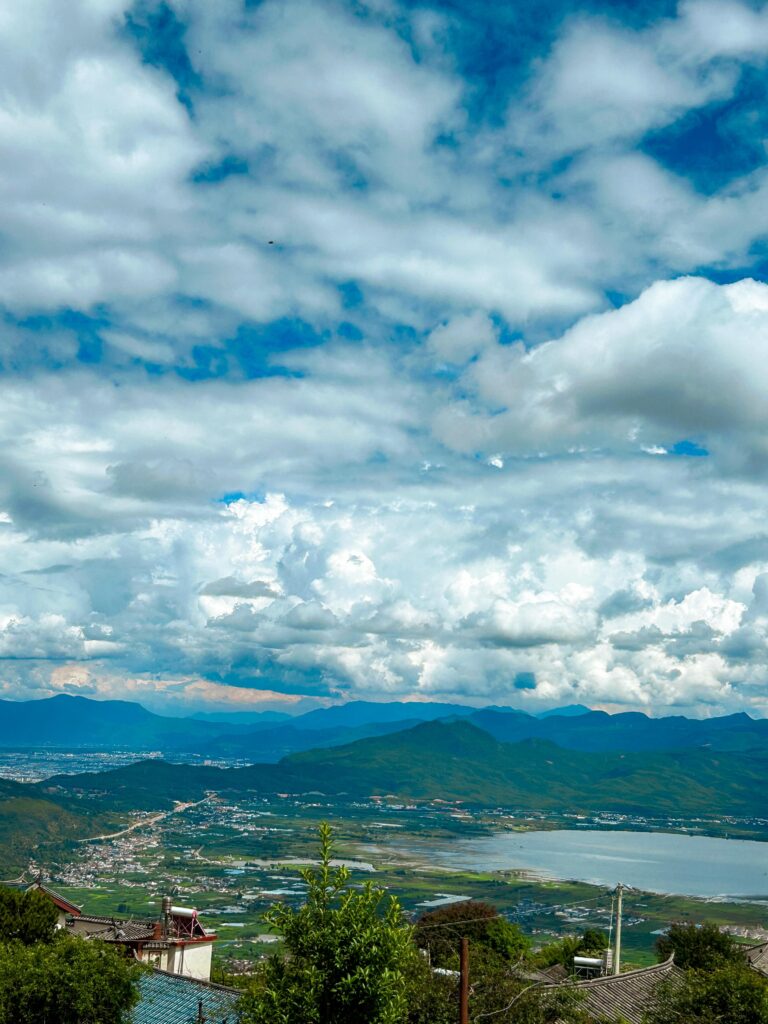
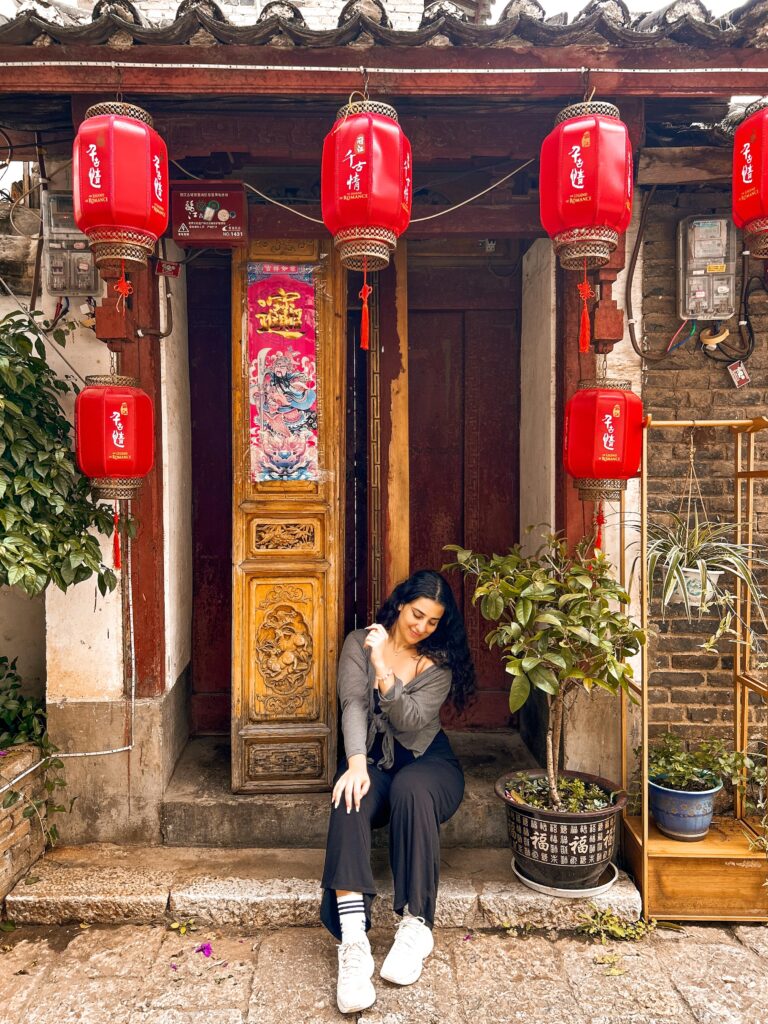
Tips:
- To move around from Lijiang to the small villages, I suggest booking a taxi with the DiDi APP (滴滴). Public transportation is also available.
- For a more scenic experience, consider renting an electric scooter or bicycle to explore places like Baisha Village (白沙古镇) at your own pace while enjoying the beautiful countryside.
- To enter the Jade Water Village you must get a ticket at the entrace with a price of 30 CNY (4 EUR).
- The Shangnan Yaoxi Village is not on the tourist map, so if you’re interested in visiting, try asking your hotel or guesthouse in Lijiang for connections to nearby villages.
Accommodation Recommendation:
In Lijiang, I stayed at Lijiang Park Designer, and it was an unforgettable experience. Beyond its central location and beautiful rooftop terrace, what made this place truly special was the staff. They were incredibly kind, always available to help, and made us feel at home from the moment we arrived.
If you visit, don’t miss the free tea tasting! We got to try local Yunnan tea while the host shared its fascinating history and it was such a special moment. The rooms are spacious and comfortable, making it the perfect place to relax after exploring the city. I highly recommend booking through Trip.com!
Day 8-9: Dali 大理 – The Chill Lakeside Town
Take a train or car from Lijiang to Dali, a beautiful town located by Erhai Lake. Dali has a completely different vibe compared to the other places as it is more laid-back, almost bohemian, and full of little cafes and bars.
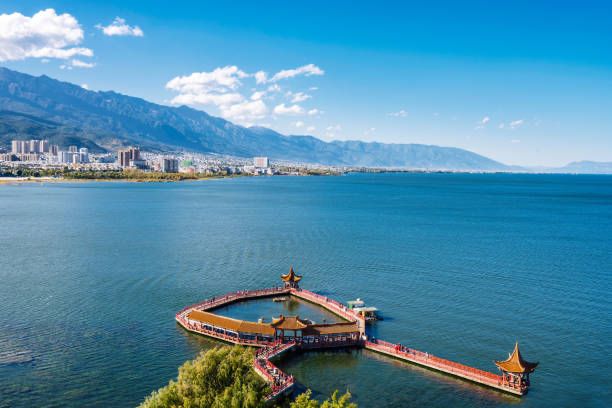
What to Do:
- Rent a bike or an e-scooter and ride along the shore of Erhai Lake.
- Wander through the Dali Old Town, filled with small boutique shops and tea houses.
- Hike to Cangshan Mountain 苍山 for panoramic views over the lake.
- Visit the Three Pagodas – 崇圣寺三塔: a beautiful landmark of Dali City and selected as a national treasure meriting preservation in China.
- Visit the Chinese Santorini: In Dali you will find a picture-perfect replica of Greece’s Santorini. It is a 3700 acres property built at a whopping cost of over 8 billion yuan (1 billion euros)!
Tips:
- Try the famous Dali cheese (乳扇), a local specialty made from goat milk.
- Tickets to the Three Pagodas are around 120 CNY (15 EUR) and you can get it right there at the entrance. Remember to take your passport with you!
Day 10: Kunming 昆明 – The City of Eternal Spring
End your trip in Kunming, Yunnan’s capital, known for its mild climate all year round.

What to Do:
- Wander through Kunming’s Old Town (昆明古城) – Explore the ancient streets, traditional architecture, and local markets. It’s a great spot for discovering the city’s history and culture.
- Visit the Green Lake Park – 翠湖公园, to see locals dancing and playing traditional music.
- Take a short trip outside the city to the Stone Forest – 石林, a unique karst landscape listed as a UNESCO World Heritage Site.
- Experience the Nanping Street (南屏街) – Kunming’s main shopping and pedestrian street, where you can shop for everything from clothing to local food, and enjoy the lively atmosphere.
Travel Tips for Yunnan:
- The best time to visit is spring (March-May) or autumn (September-November).
- Yunnan’s weather can change quickly so always carry both sunscreen and a jacket with you.
- Many people in smaller villages don’t speak Mandarin, especially in Tibetan areas so a translation app can be very helpful.
- While places like Lijiang and Dali are popular, make sure you don’t miss out on the hidden gems of Yunnan, like the tranquil villages of Shuhe and Baisha or the breathtaking Tiger Leaping Gorge.
- The Tea Culture is deeply rooted in Yunnan’s culture, and you’ll find many local tea ceremonies or tastings. Don’t miss the opportunity to try local teas, such as the famous Pu’er or black tea and learn about their fascinating history.
- Yunnan is home to 25 different ethnic minorities, including the Tibetan, Naxi, Yi, and Hani people. The province’s diverse cultures are reflected in everything from architecture to festivals, making it a truly unique place to visit. Each minority group has its own traditions, so take the time to learn about and appreciate them.
- While Yunnan is a popular destination, remote villages like those in the mountains may have few foreign visitors. I had an experience in a mountain village where an elderly man had never seen a foreigner before and was initially startled. Being patient, understanding, and kind helped create a positive interaction, so remember to approach new situations with respect, especially in remote areas.
- The food in Yunnan is bold and distinctive, with flavors that may surprise you. In Shangri-La, for example, yak meat is a local delicacy. I tried it, but the taste was not my favorite. Yunnanese cuisine is known for its spicy, sour, and earthy flavors, so keep an open mind and be adventurous when trying new dishes.
- Traditional Clothing: It’s not cultural appropriation to try on local traditional clothes when visiting ethnic villages; rather, it’s a way to show respect and appreciation for the culture. Many people in Yunnan, especially in minority villages, will appreciate your interest and it can lead to meaningful exchanges. Just make sure to ask for permission first, as it shows sensitivity to their culture.
Final Thoughts
Yunnan is one of those places that leaves a deep mark on your heart. Here you can truly experience the diversity of cultures that coexist in this corner of China. If you’re planning a trip to China and you want to experience something completely different from the usual tourist routes, I can’t recommend Yunnan enough.

